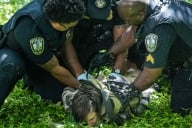You have /5 articles left.
Sign up for a free account or log in.
As financial markets improved, selective private colleges saw their cash and investments increase faster than their operating budgets in the 2004 fiscal year, reversing the pattern of the year before. But except at the very top tier of institutions, the colleges' debt rose even faster, as they poured money into expanding and renovating facilities, Standard & Poor's said in a report released this month.
The report, "Fiscal 2004 Ratios for U.S. Private Colleges and Universities," examines a large number of aspects (financial and otherwise) of private colleges that are publicly rated, which typically represents the best financed and most stable institutions.
The credit agency's report focused on two major trends. First, it found that unlike in 2003, when colleges' investments and cash on hand declined, forcing them to cut their operating budgets, improving endowment growth resulted in an increase in the average institution's ratio of cash and investments to total operating expenses.
That increase was mitigated, though, by increased debt at all institutions except those that Standard & Poor's rates "AAA," which tend to be those with the largest endowments. The increased debt was driven, the ratings agency said, by the historically low long-term interest rates and by colleges' perceived need to invest in their facilities, both to meet growing enrollments and to catch up on maintenance that many institutions defer during economic downturns.
In a conference call to discuss the report, analysts for the ratings agency said the financial picture for selective private institutions was generally improving. Mary Peloquin-Dodd, a Standard & Poor's director who specializes in higher education, said private colleges faced several significant challenges, including public concern about rising college prices and the uneven demographic changes that will result in growth for some institutions and enrollment declines for others.
But "in aggregate, if you look at just the financial data, what we're saying is that fiscal 2004 was better than prior years," said Mary Peloquin-Dodd.
The main caveat she offered to that assessment, though, was that the "pretty dramatic" increase in debt raised concerns that some institutions may be overbuilding or overinvesting in their facilities -- which may not have ramifications for a decade.









